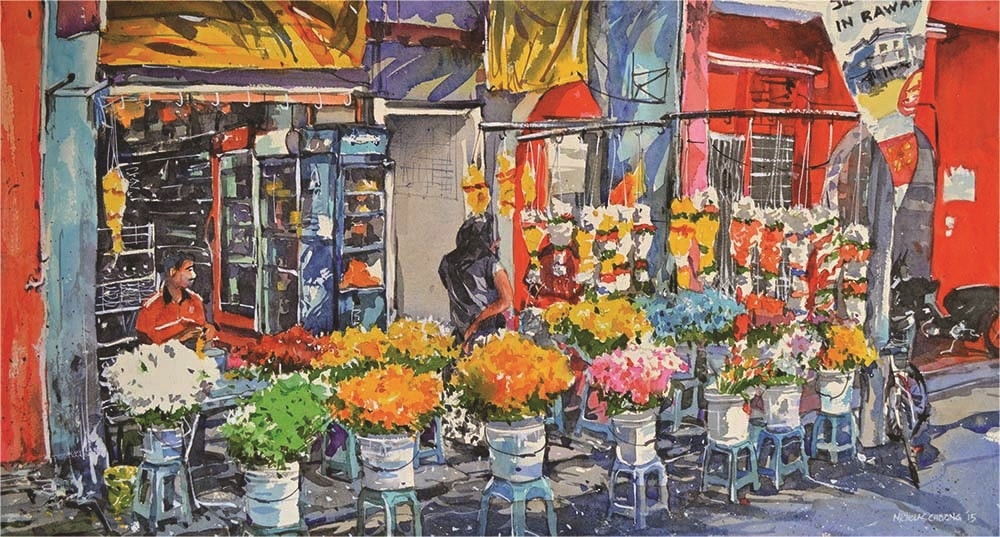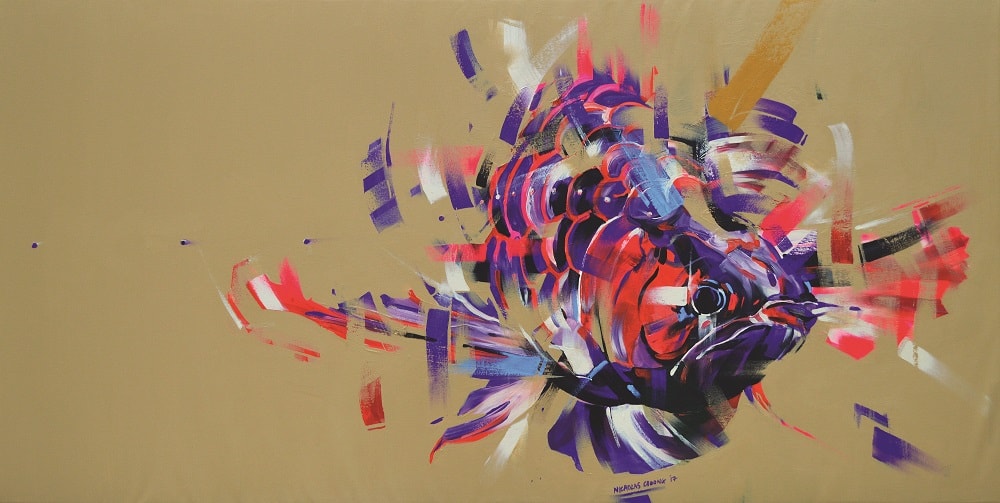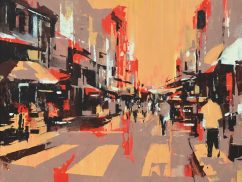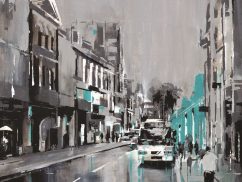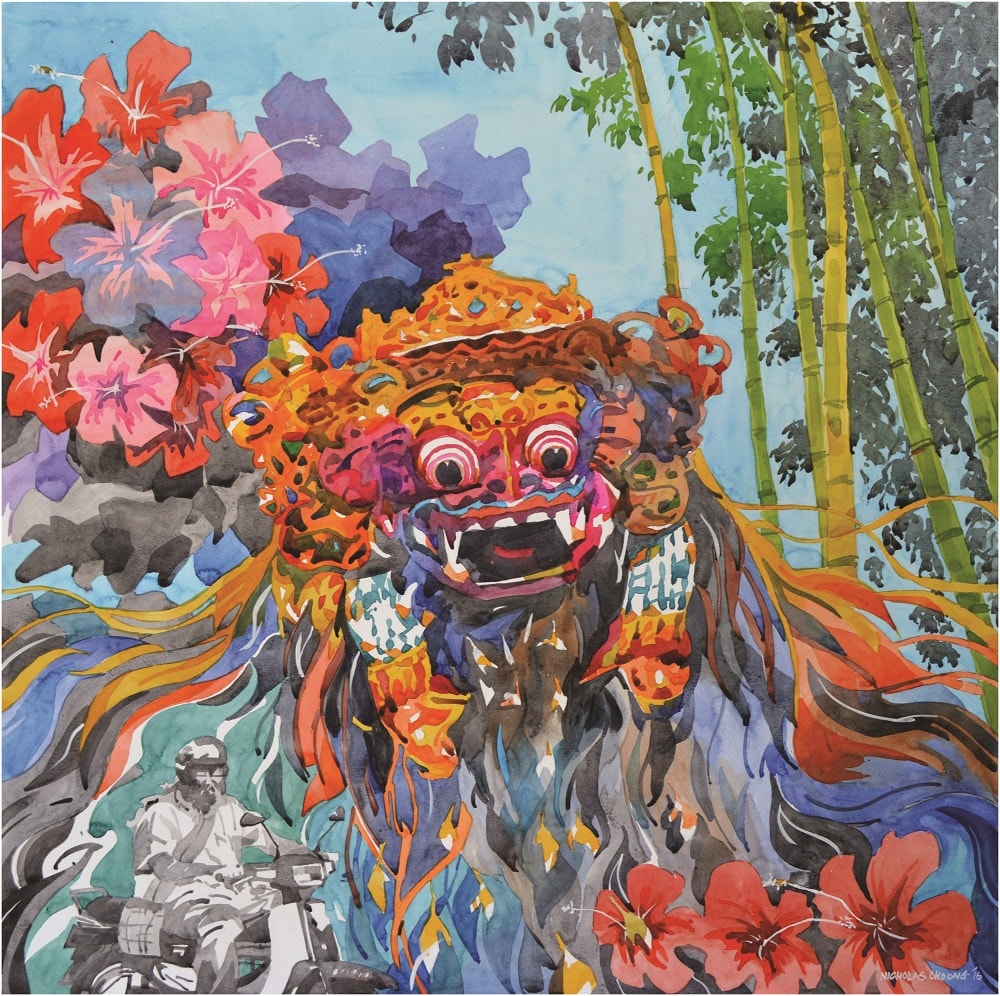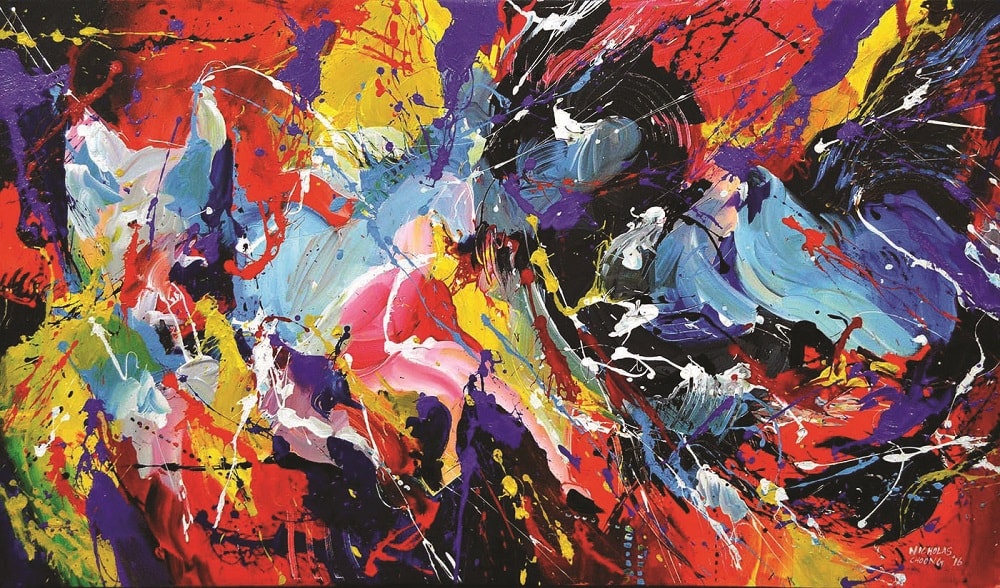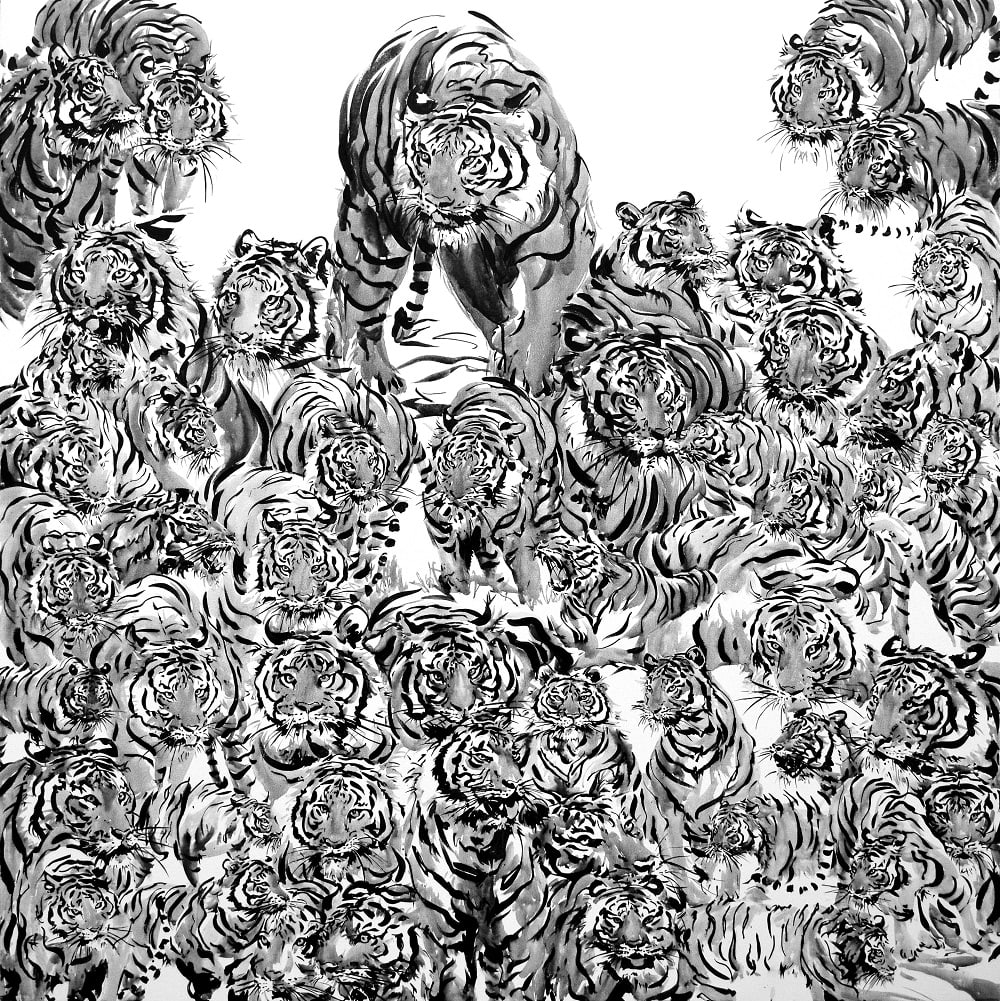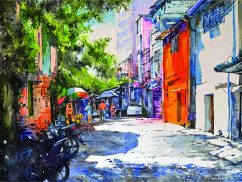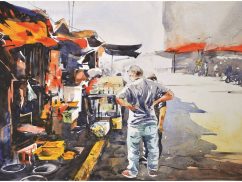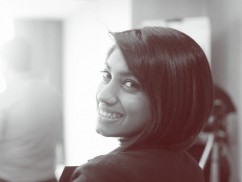
Nicholas Choong’s paintings are not only beautiful and striking, they’re also the product of profound thought and hard work. Sharuna Segaren chats with him about his processes as an artist and his versatile life.
Just like most of his paintings, artist Nicholas Choong’s life is colourful. Not only is he an established artist since the 1980s, he is also the Creative Director of a local start-up media company, runs two record labels, has previously worked in photography and sound engineering, and was a DJ for a period of time.
With art being his first love, music took a backseat in 2011 when he began to focus on his art career. Nicholas tells me how art came naturally to him as a child.
Artist by nature
The friendly and witty man said, “I started drawing in the 1980s. I was heavily influenced by comic book art and stories as a youngster. As I grew older, I began to appreciate other forms of art such as painting, graphic design,
photography, video, music production, performance art, and so on.”
When asked what inspired him to pick up art in the first place, Nicholas recalls, “As a kid, drawing was just something that came to me naturally. I wasn’t great at school and I had all these unused exercise books and papers lying around. I wouldn’t say anything really “inspired” me, to me art is something you either do or don’t do. Just like dancing, writing, painting for other people, it was just something I did, and enjoyed doing.”
Nicholas credits his mother for sending him to art classes when he was 15 years old because that was when he found direction in his life and what he really wanted to pursue. “I studied for a year under an awesome teacher who was also an artist. Unfortunately I cannot remember his name now, but under him, I learned the fine arts of drawing and watercolours. Big thanks to my mum because at that age I really had no idea what I wanted to do with my life, and these classes pointed in the right direction.”
A contemplative artist
Nicholas is an observer as much as an artist. He gets inspiration from the people he meets in his everyday life, and that in a broad sense, ‘everything’ inspires him.
“I think everyone has a valid point, whether it’s a musician, fellow artist, filmmaker, writer, people in business, ‘enlightened’ people, or the common man on the street.
“I collect all kinds of references. As an artist, I just file them away into their respective compartments and build on that for reference points to springboard new designs, ideas, or paintings.”
He says that everything an artist takes in – physically, emotionally, mentally, spiritually – all plays a part in the art they create, and that inspiration is only part of the puzzle to creating a piece of artwork.
“Even things that you send out into the world, either consciously or subconsciously, affects how and what you create. I don’t worry about the inspiration part. That comes naturally. The work comes first. For the work to happen, you’ll need the settings to be right. This is called in a blunt sense, a ritual. This is why artists have studios. The 40-year-old artist has held several exhibitions and worked on many series over the years, his work best described as contemporary.
His paintings use elements of semi-realism, mostly landscapes, portraits, and abstracts.Nicholas says that each series he has done holds a special meaning to him, as each was something that he needed answers to or was done to facilitate new questions and problems in life.
When asked how Nicholas would categorise his painting technique, he said, “I wouldn’t. I just paint. I think virtually any technique can be learned and applied by anyone, if they tried hard enough. I’m more interested in the thought processes that artists and creators go through. I only compare my new work with my old work.
“I ask myself questions, like ‘Was I able to paint this subject better than the last version?’ or ‘How have I broken out of my comfort zone with this painting’? I constantly challenge and ask myself if I’ve learned anything new while I was working on a particular painting, in life, socially, spiritually, and so on. It’s a never-ending internal discussion with myself, but I believe it is good practice for not only reviewing my progress, but mapping my future as an artist.”
Although he constantly reflects and questions himself, he’s not one to stew over a painting. It usually takes him no longer than a week to complete a painting, or sometimes just a day or two. He succinctly puts it, “I don’t see how going back to the painting several times to make changes serves the purpose of art.”
Besides his other jobs and working in his studio in Damansara Perdana, Nicholas also teaches art classes to a select few. He often finds himself giving talks and workshops on his life as a career artist to college and university students, thanks to friends in the industry. He laughingly says, “Apparently, I have some
knowledge on certain issues that people don’t mind listen to!”
Master of several trades
Just like most artists, Nicholas has grown as an artist over the years, in more ways than one.“Before, I was thinking about the bottom line, the money aspect; ‘What should I paint to pay my bills?’ Thankfully, I’ve passed that stage. Now I’m using a different set of questions, like; ‘If I’m doing this, what beauty am I adding to the world?’ or ‘By doing this, how am I helping to eradicate doubt and fear, suffering?… things like that.’ And my favourite, ‘What am I really doing this for?’ So, I’d like to think my thought processes have evolved and, hopefully, matured,” he says.
Currently, he has just finished two arowana paintings, and will most likely paint more of these works for a gallerist in Desa Parkcity. “There are several themes I’m working on. Figurative and cityscapes are some of them. The
cityscape paintings are for another gallery called Pelita Hati in Bangsar. This year, I’m learning how to work with different galleries for each series.
“My life is quite fast-paced and unpredictable. It’s different each month, I’m all over the place. Attending meetings, coordinating art shows, writing, painting, giving talks, working on video content, drawing storyboards. The list goes on. I’ll post my events, shows, and artworks on my Facebook and Instagram accounts, but I won’t post everything I’m doing. That would drive me insane.”
We concluded the interview with some parting advice for fellow artists. Nicholas said, “I’ll impart three words, they were given to me as advice from a very knowledgeable artist. When he told me this, he was working on his Ph.D. thesis in fine arts. It’s simple, but important: ‘Do good work’. That’s all. Do good work. Everything else will come naturally with effort and determination.”
This article was originally published in The Expat magazine (February 2017) which is available online or in print via a free subscription.
"ExpatGo welcomes and encourages comments, input, and divergent opinions. However, we kindly request that you use suitable language in your comments, and refrain from any sort of personal attack, hate speech, or disparaging rhetoric. Comments not in line with this are subject to removal from the site. "

